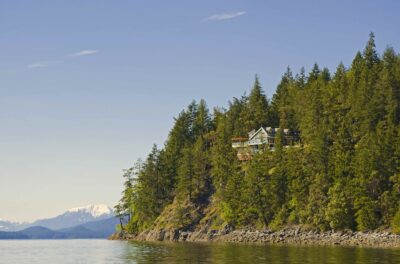This weekend I read Micheal Lewis’ latest book ‘Going Infinite’. The book recounts the story of Sam Bankman-Fried (SBF) and the FTX exchange that collapsed in November last year. Although I had no direct personal losses, I hated SBF for how he had betrayed his investors, caused many people to lose all their savings and potentially their livelihoods, and generally gave crypto a bad name in mainstream media. At first I didn’t really want to read the book because I was disgusted about what SBF had done, but because I was still interested to better understand how it had been possible that SBF went from being a total nobody to the richest person under 30 in about 3 years and then lost it all in a week’s time, I decided to read the book. Unexpectedly, I see SBF in a very different light after reading it and I now even wonder if the whole downfall of FTX could not have been avoided. I know this is extremely controversial and it won’t make me any friends, but I still want to share my thoughts. By the way, I fully expect SBF to be convicted and sentenced to at least 20 years in jail, but that’s how the system works unfortunately.
From a nobody to a multibillionaire
The book describes how SBF grew up as an antisocial, extremely gifted child in a family of university professors. He was always bored in school and only found his calling after ending up at Jane Street Capital after graduating university. There he made very good money for the firm (and himself), but even though they told him he might be making tens of millions of dollars per year within a few years, he decided to leave and start its own trading fund (which became Alameda Research, and he later also founded FTX). Sam was a strange person, but he was not after money. He totally didn’t care for money actually and his only goal was to make as much money as he could so he could give it all away, as a so called effective altruist. He surrounded himself by other effective altruist, who also supplied the original capital for FTX. Although at first they lost money, Sam soon turned it around with a trading bot strategy and since then the company was literally printing money. The rest is history: he soon attracted a lot of outside capital, set up the FTT coin and within 2 years he was a multi-billionaire.
The FTX organisation was a total mess
He might have been a great trader, but he was not a manager. He was clearly on the autism spectrum and he didn’t have a lot of empathy for other people, which should have disqualified him for any C-level position. However, the investors didn’t (want to) see this because he was making so much money. SBF didn’t care about any details of the business, from the book it became clear that he had only a very rough idea of what was going on in the company. He just couldn’t be bothered. FTX didn’t have an organisation chart, there were not even any real job titles. But despite that they were growing extremely fast and making incredible returns. How much? It seems nobody really knew because there was not even a formal CFO or a Chief Risk Officer.
From no bank account to a bank run
Alameda Research, the original trading firm, had a bank account, but FTX couldn’t get one during the first couple of years of its operations. That meant that investors who wanted to put money on to the FTX platform had to wire it to Alameda first. I think that’s where things started to go wrong, because it turns out that money was never wired to FTX! Alameda traded it and did very well with it for a long time. But I believe that when in May and June 2022, when the crypto ecosystem started to collapse because of Terra Luna (taking down Three Arrows Capital, Voyager Digital, Blockfi and Celcius as well), Alameda may have had too much leveraged exposure (with forced liquidation at lower prices) or may even have been hacked. At the same time SBF went on a spending spree and by doing that helped to save crypto, but he may have not realised that he turned liquid capital into illiquid capital. That wouldn’t have been a problem if there wouldn’t have been a bank run, but that is exactly what happened when his main rival, Binance CEO Chaopeng Zhao, announced on Twitter that he was selling all his FTT tokens.
FTX is not insolvent
During the bank run SBF may have realised for the first time that Alameda may not have sufficient cash to pay back all clients. There seemed to be a hole of $7 billion between deposits and liquid assets, and SBF didn’t know where the money was. At first he didn’t seem to care, because in his mind he would be able to find the money or to earn it back, and he could always raise more outside capital. But after Binance didn’t want to invest nobody else wanted to put money in either, and suddenly SBF was in real trouble. His laywers put tremendous pressure on him to sign bankruptcy documents and he eventually signed them, which in my opinion led to his downfall and the current court case. The lawyers knew they could make incredible money in a FTX bankruptcy (his law firm will make about $200 million according to the book), so they had an incentive to push the company into bankruptcy.
I think that was SBF’s biggest mistake. Why? A few months later it turned out there actually was no gap of $7 billion! The bankruptcy trustee found that the money was there and all the creditors can be paid back all the money owed to them. Even better, it turned out that SBF had invested $580 million into Anthropic, giving it a 20-25% stake in the company. That company was just valued at up to $30 billion, meaning the stake would be worth at least an additional $6 billion. Interesting fact is that the prosecutors asked the judge this week to not allow the defendants to mention this as a defence for SBF! SBF is now in court because his firm is bankrupt, but in reality everyone will get their money back – and there will likely be billions left in the company.
Was SBF a crook?
SBF’s former colleagues are all testifying against him, trying to save themselves after making plea deals with the prosecutors. I am not saying that SBF was innocent, because from a US legal perspective he is not. He made a lot of stupid mistakes and because of his psychological issues he lived in a parallel world instead of realising what was at stake. But he was not a crook. He didn’t do this to get rich or to get more famous. He didn’t care about money, it was just a tool to make the world a better place for him.
SBF is now caught in a web of people who can make money off of him (total bills for the bankruptcy team could be $1 billion!), and the prosecutors seem to make an example of him to make crypto look bad. I don’t believe in jury trials for complicated cases, in my opinion ordinary jurors simply can’t comprehend the details of a case like this. So he will most likely be convicted and locked up for decades despite, in my opinion, not intentionally having done anything wrong and without (as it turns out) anybody who lost their money. It won’t feel fair to me: SBF is not innocent, but he is not a crook either. It will be a sad ending for a flawed genius.
Note: This is my personal opinion based on the Michael Lewis book combined with my personal knowledge of the crypto world and the role that FTX played in it. Nothing I wrote here is related to any of the companies I am involved in. Of course none of this should be used as investment advice for any securities related to FSX or its bankruptcy.


